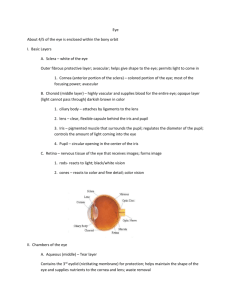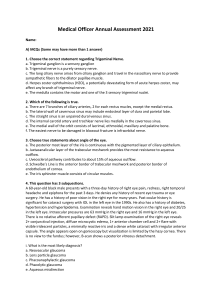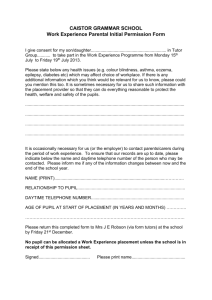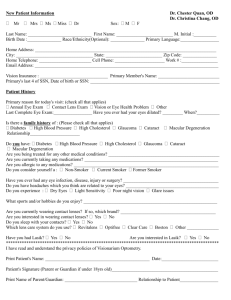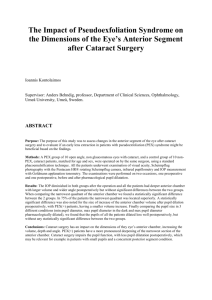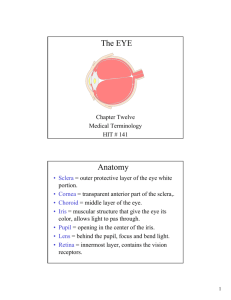Section II - Appearance of the Eyes
advertisement
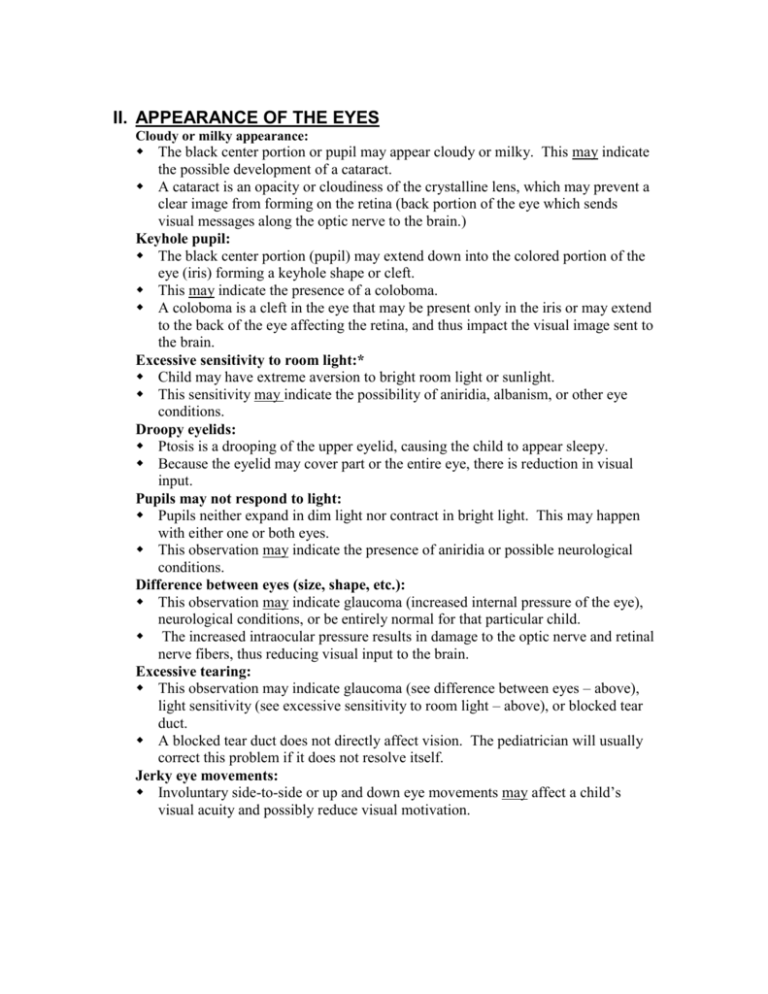
II. APPEARANCE OF THE EYES Cloudy or milky appearance: The black center portion or pupil may appear cloudy or milky. This may indicate the possible development of a cataract. A cataract is an opacity or cloudiness of the crystalline lens, which may prevent a clear image from forming on the retina (back portion of the eye which sends visual messages along the optic nerve to the brain.) Keyhole pupil: The black center portion (pupil) may extend down into the colored portion of the eye (iris) forming a keyhole shape or cleft. This may indicate the presence of a coloboma. A coloboma is a cleft in the eye that may be present only in the iris or may extend to the back of the eye affecting the retina, and thus impact the visual image sent to the brain. Excessive sensitivity to room light:* Child may have extreme aversion to bright room light or sunlight. This sensitivity may indicate the possibility of aniridia, albanism, or other eye conditions. Droopy eyelids: Ptosis is a drooping of the upper eyelid, causing the child to appear sleepy. Because the eyelid may cover part or the entire eye, there is reduction in visual input. Pupils may not respond to light: Pupils neither expand in dim light nor contract in bright light. This may happen with either one or both eyes. This observation may indicate the presence of aniridia or possible neurological conditions. Difference between eyes (size, shape, etc.): This observation may indicate glaucoma (increased internal pressure of the eye), neurological conditions, or be entirely normal for that particular child. The increased intraocular pressure results in damage to the optic nerve and retinal nerve fibers, thus reducing visual input to the brain. Excessive tearing: This observation may indicate glaucoma (see difference between eyes – above), light sensitivity (see excessive sensitivity to room light – above), or blocked tear duct. A blocked tear duct does not directly affect vision. The pediatrician will usually correct this problem if it does not resolve itself. Jerky eye movements: Involuntary side-to-side or up and down eye movements may affect a child’s visual acuity and possibly reduce visual motivation.



